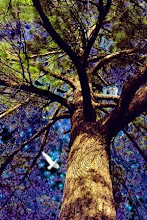peggy sanders brennan
Keeping the Old Baskets Alive
 Peggy Sanders Brennan, one of the leaders of Midwestern and Southeastern Native basketry, credits her art and connection to Cherokee culture for leading her away from overwhelming grief. “My knowledge of Cherokee basketry was my way of connecting to my past after the death of my father, Buck Sanders,” says Brennan. “After my father died, I needed a connection to him; his mother, Myrtle Monroe; and to my other Cherokee grandmothers.”
Peggy Sanders Brennan, one of the leaders of Midwestern and Southeastern Native basketry, credits her art and connection to Cherokee culture for leading her away from overwhelming grief. “My knowledge of Cherokee basketry was my way of connecting to my past after the death of my father, Buck Sanders,” says Brennan. “After my father died, I needed a connection to him; his mother, Myrtle Monroe; and to my other Cherokee grandmothers.”
 In the late 1980s, Brennan, 59, searched out her ancestry at the Cherokee Nation’s capitol in Tahlequah, Oklahoma, and at the Oklahoma Historical Society with the help of her mother and oldest sister. Through the guidance of Cherokee artist Betty (Queti) Bondy, Brennan, a member of the Wolf Clan, studied ancient Cherokee beliefs for many years. “It was during this time that I began an interest in basket weaving,” Brennan says.
In the late 1980s, Brennan, 59, searched out her ancestry at the Cherokee Nation’s capitol in Tahlequah, Oklahoma, and at the Oklahoma Historical Society with the help of her mother and oldest sister. Through the guidance of Cherokee artist Betty (Queti) Bondy, Brennan, a member of the Wolf Clan, studied ancient Cherokee beliefs for many years. “It was during this time that I began an interest in basket weaving,” Brennan says.
After failing to locate any local Cherokee weavers, patterns or techniques, “I bought any books about basket weaving I could find,” Brennan says. She examined Southeastern Indian baskets in private and museum collections to learn how her ancestors wove Cherokee twill baskets from maple, ash and honeysuckle. And she learned how to use plants, minerals and insects to dye her basket splints.
Then one day Brennan met master Cherokee basket weaver Mavis Doering, who taught her how to weave the Cherokee wicker plaited double-wall basket. Brennan learned how to gather and process river cane from artists Robin McBride Scott of Indiana and Roger and Shawna Cain of Oklahoma. And Michigan weaver Jackie Carlson, author of Flowing Water, which details the Cherokee double-weave technique, helped Brennan master the river cane double-weave basket.
 Brennan says that the significance of the various symbols on Cherokee baskets relates to her people’s spirituality. “The clan symbols woven into mats and baskets identified who we were,” she says. ”When we attended a council meeting, our mat with the clan symbols hung above us and we sat on a mat with our symbols.” These symbols, which derive from both natural objects and religious worship, form the basketry, beadwork and finger-weaving patterns that journeyed to Oklahoma along the Trail of Tears with their creators. “By keeping the designs alive in our baskets,” she says, “we are remembering our past.”
Brennan says that the significance of the various symbols on Cherokee baskets relates to her people’s spirituality. “The clan symbols woven into mats and baskets identified who we were,” she says. ”When we attended a council meeting, our mat with the clan symbols hung above us and we sat on a mat with our symbols.” These symbols, which derive from both natural objects and religious worship, form the basketry, beadwork and finger-weaving patterns that journeyed to Oklahoma along the Trail of Tears with their creators. “By keeping the designs alive in our baskets,” she says, “we are remembering our past.”
Brennan’s desire to preserve the ancients’ patterns was bolstered by a First Place ribbon in the 1993 exhibit The Fire Takers: A Cherokee Homecoming Art Show at the Cherokee National Museum in Tahlequah for a traditionally woven and dyed oak plaited twill basket. Among her other awards, Brennan treasures her Judges’ Choice ribbon at the 2000 Heard Museum Indian Market for a basket tray.
Two of Brennan’s baskets were included in the traveling exhibit By Their Works You Shall Know Them, running from 1994 to 1996. This exhibit depicted the effects on Southeastern Indian basketry of the forced removal of Natives to Oklahoma. She was also an artist in residence at the Eiteljorg Museum in connection with the Philbrook Museum of Art’s world-renowned Clark Field Collection in 1999.
The lady who once taught herself weaving now shares her hard-won skill with others, including many family members. “I hope to continue to honor my teachers by passing on the art of Cherokee basketry,” Brennan says. “Teaching Native basketry is now more important to me than actually weaving baskets.” In 2001, Brennan started a small basketweaving circle to teach Native basketry, which grew into the Oklahoma Native American Basketweavers Association, with the assistance of former California Indian Basketweavers Association director Sara Greensfelder.
Brennan says of her students, “What I hope they remember is that their past is as important as their future and what they do now affects seven generations to come.”
Brennan’s work can be found on her Web site and at many Indian museum gift shops, including White River Trader at the Eiteljorg Museum and the Cherokee Heritage Center in Tahlequah. She also sells at shows, including the Heard Museum Guild Indian Fair & Market.




No comments:
Post a Comment